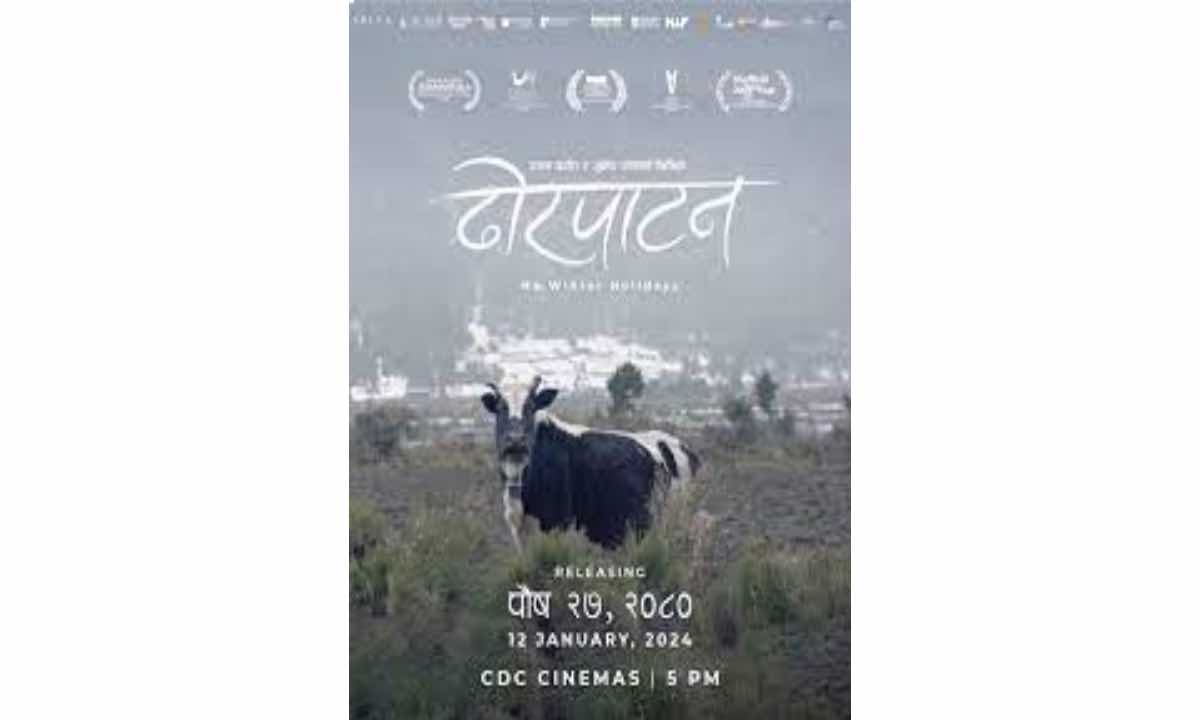Documentary Review: No Monastery, No Village
1 month ago
The author is a third-year student of Media Studies at Kathmandu University School of Arts

1 month ago

In the quiet valley of Dhorpatan, I am surrounded by the stunning grasp of snowy green trees and scattered stone homes, the remains of a village that appears to have vanished. I follow a woman, captivated by the beautiful rhythm of her singing, a moving dedication to life. As I wander through the desolate village, the echoes of her melody intertwine with the emptiness weaving a tale of resilience and solitude.
Sunir Pandey and Rajan Kathet’s Dhorpatan (No Winter Holidays) is a moving documentary set in the valley of Dhorpatan situated in the Baglung district of Nepal. The documentary is a story about two women, Ratima and Kalima, living alone in a nearly empty village. It’s a simple yet powerful tale of life, loss, and survival against the backdrop of nature’s harsh realities.
For me, the beauty of the film lies in its setting. The camera captures the aesthetic charm of Dhorpatan with its snow-capped green trees and stone houses surrounded by hills. The visuals are so real, I felt like I was right there in the village, feeling the cold air and sensing the quietness around me.
The heart of the documentary is the story of Ratima and Kalima- cowives (sauta). Ratima deals with her loneliness through her songs and dreams. She recalls her past and her lost husband. Kalima, on the other hand, finds comfort in talking to animals and her daughters on the phone. Their different ways of coping with loneliness show us, two sides of life in Dhorpatan. Ratima looks back at her past, while Kalima looks forward to the future.
The documentary beautifully shows the resilience of these ladies, debunking stereotypes of women as weak and dependent. Ratima and Kalima demonstrate bravery that extends beyond physical bravery to emotional and mental strength. Their dedication serves as an example of the strength of the human being, proving that courage has no gender.
As I watched the documentary, I felt like an invisible observer, silently following the two women through the landscapes of Dhorpatan and the complexities of their lives. However, there were times when the cameraman engaged in conversation with the women, which disrupted my immersion. An off-screen voice interrupted the experience I had been deeply immersed in, grabbing me out of the story for a moment.
The cinematography got me hooked. I could not take my eyes off the screen even for a second. Instead of just focusing on the women, the camera shows the whole village and its atmosphere. That made me feel like I was part of the village, living the same experiences as Ratima and Kalima. The still shots, capturing the serene landscapes and the quiet moments of the characters, enhance the emotional depth of the narrative.
The choice of wide and still shots in the documentary is very effective. It allows the audience to absorb the beauty of Dhorpatan, creating a visual contrast with the emotional complexities of Ratima and Kalima’s lives. The wide shots establish a sense of place, emphasising the isolation and vastness of the village. The still shots, on the other hand, offer moments of reflection and introspection, inviting the audience to connect with the characters on a deeper level.
The use of repeated landscape shows the striking contrast between the village’s liveliness with its inhabitants and its emptiness without them. It’s a visual tribute to how the same site can change dramatically over time, emphasizing the fluctuation of life in this isolated village. As the seasons change and the villagers come and go, the terrain serves as a permanent backdrop, observing the joys and struggles of those who live there. The contrast of scenes not only highlights Ratima and Kalima’s courage but also emphasizes the cyclical nature of life in Dhorpatan, where each passing instant offers a new story of solidarity and survival against nature’s ever-changing backdrop.
The documentary, with its captivating visuals, turns into a canvas where the inspiring story of two brave women unfolds. It’s like a feast for the eyes and emotions, sticking with you even after the credit rolls.

- by Pratyencha Koirala
_20220508065243.jpg)
- by Mimansak Nepal


- by Sanskriti Pokharel
Leave A Comment